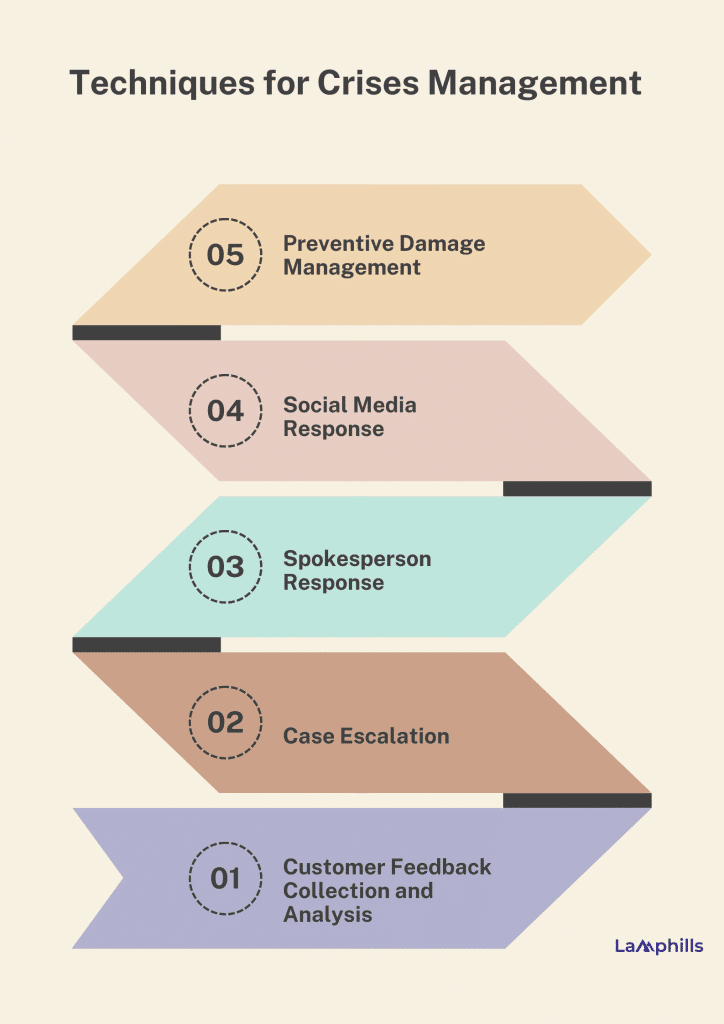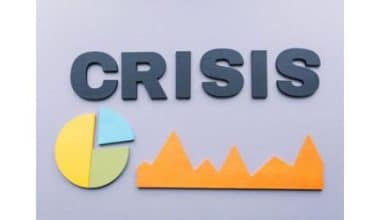We all want to think we can perform well under pressure, rise to every challenge, handle criticism as professionals, and react appropriately when the going gets tough. Unfortunately, this is not often the case for firms in difficulty and the people who manage them. This is why a crisis management strategy is so important.
So, to set you up for business success, in this article, I will share 10 examples of crisis management that really stuck with me—situations where brands turned possible disasters into strong displays of leadership and honesty. In simple terms, we will go over how these companies turned their biggest problems into growth opportunities.
Let’s get started…
Key Takeaways
- Crisis management is a strategic approach to deal with unexpected negative events that could harm an organization’s reputation, operations, or stakeholders.
- Effective crisis management involves honest and sincere communication, timely responses, and sometimes strategic silence when appropriate.
- Forming a dedicated crisis team and appointing a spokesperson are crucial steps in preparing for potential crises.
- Collecting and analyzing customer feedback can help identify potential issues before they escalate into full-blown crises.
- Social media plays a significant role in modern crisis management, both as a potential source of crises and as a tool for responding to them.
- Proactive damage control, including preventive measures and preparation, is essential for minimizing the impact of potential crises.
- The five P’s of crisis management are: prediction, prevention, preparation, performance, and post-action assessment.
What is Crisis Management?
Crisis management is a corporate approach that helps organizations deal with a terrible incident. A negative occurrence might range from a little PR disaster on Twitter to a major injury or death. Managing a crisis entails devising a strategy and coordinating resources to meet the needs of those affected while also restoring the brand’s reputation.
Crisis management is a process that prepares managers and staff for unexpected scenarios and circumstances within the organization. Having one in place enables them to control their emotions, reduce risk, and adapt effectively to changing circumstances when under pressure. It is also vital to keep the situation from deteriorating for customers and your company.
Read Also: Building an Effective Crisis Management Plan for Your Business
Why is Crisis Management Important?
Every company’s larger public relations strategy should include a crisis management plan, which aids in preparing for such situations. A well-thought-out plan will mitigate if not completely prevent, a disaster.
For the most part, if your workforce is well-prepared for unforeseen events, there is less chance of long-term harm to their reputation and loss of money. Unfavourable information travels quickly, and your actions—or lack thereof—will be shared publicly, where they will most likely remain for some time. Unexpected crises also divert teams from their regular goals, which could impede the company’s expansion.
Crisis Management Best Practices
Now that you’ve seen the importance of crisis management let’s go over the fundamental concepts and best practices of a good crisis management strategy.
#1. Act with Honesty and Sincerity
The truth will always come out. Make sure that your company’s response is consistent with the news.
#2. Maintain Silence When Appropriate
Silence may be golden. In cases where only one person is affected, reaching out directly may be more successful than bringing the matter to the public’s attention.
Employee Crisis Training Checklist.pdf
#3. Form a Crisis Team
Establish a chain of command that includes at least one executive. Provide points of contact for both internal and external messaging. Also, a crisis management project manager should be hired to coordinate operations across the firm.
#4. Appoint a Spokesperson
Ideally, this will be your CEO or another key executive. Their task is to assist in the drafting and release of a statement on behalf of individuals affected by the situation. Respond quickly
The longer a brand waits to respond to a problem, the more manipulative it appears. Take immediate action and do not wait more than 48 hours for public feedback on the matter if a response is required.
10 Examples of Crisis Management
#1. Boeing 737 MAX
Boeing faced a big issue after two of its 737 Max jets crashed in Indonesia and Ethiopia just five months apart in 2018 and 2019. The crashes killed a total of 346 people, and the manufacturer is still dealing with the aftermath.
Boeing first blamed pilot error for the incidents but later discovered that the cause was a flight control software malfunction. The FAA and other global regulators responded by grounding all Boeing 737 Max jets for 20 months until they could determine which software problem was causing the catastrophic crashes.
As a result, Boeing’s stock price plunged, forcing the corporation to cease manufacturing of the Boeing 737 Max, incurring billions of dollars in damages. When the epidemic came in 2020, and air traffic slowed, Boeing faced another crisis when orders for the aircraft were cancelled, resulting in additional financial losses.
To make matters worse, after being authorized to fly in November 2020, the 737 Max jets were grounded again in early 2021 due to electrical difficulties. In 2021, Boeing was ordered to pay $2.5 billion to settle allegations that it concealed problems with the plane from safety officials.
#2. Hollywood Foreign Press Association
The Hollywood Foreign Press Association faced criticism in 2021 for its lack of inclusivity and diversity. The HFPA was threatened with a boycott of the Golden Globes unless it agreed to implement “transformational change” within the organization by more than 100 PR firms and the celebrities they represent.
#3. Amazon
Amazon attracted criticism in December 2021 after a tornado ripped through one of its warehouses in Edwardsville, Illinois. A series of storms blasted through Tennessee, Kentucky, and Arkansas, and a warehouse in Illinois collapsed, killing six people.
When news appeared that Amazon warehouse workers were allegedly compelled to continue working despite tornado warnings, the company’s health and safety policies were swiftly questioned.
Amazon’s first mistake was a delayed public response. CEO Jeff Bezos spent almost 24 hours to respond to the warehouse catastrophe.
#4. University of Washington
In a university crisis communication plan, emphasis is placed on crises that may disrupt routine school and administrative duties. For example, if a risky situation occurs on or near campus, my college sends out an email to students with a list of safety suggestions. Universities often prepare for crises such as marches or rallies, injuries or deaths among community members, and negative publicity about the school.
The University of Washington has a comprehensive crisis communication plan aimed at ensuring community members’ safety and security. As a university, the primary communication targets are students, faculty, staff, parents, and alumni, as well as visitors, temporary residents, the general public, and the media.
#5. Virginia Department of Education
Schools, like colleges, must effectively deal with emergencies, especially if they disrupt the regular teaching schedule. Because schools work with children, parents and guardians must be informed of any situations that may have an impact on their children’s education, safety, or health.
The Virginia Department of Education has developed an extensive management strategy, which includes crisis communications. The strategy identifies several scenarios that would necessitate communication with parents, such as a school bus accident, and provides letter templates that can be swiftly distributed.
#6. The Cracker Barrel
On the corporate website of Cracker Barrel, a man by the name of Bradley Reid posted a query in 2017. He was curious as to why his wife had been fired from her management role at one of the company’s Indiana stores after serving for 11 years.
With #JusticeForBradsWife trending and other brands putting up signs expressing their willingness to hire Brad’s wife, the social media firestorm spread swiftly.
How did Cracker Barrel respond? Stillness.
The details of Brad’s wife’s job loss were never made public, and the situation subsided in a few months. In this instance, Cracker Barrel was able to weather the storm since it concerned only one individual and their unique set of circumstances. Speaking up might have raised concerns about personal privacy and placed the organization on the defensive, even if the job loss was innocent. They decided to wait out the storm instead.
#7. Burger King
In the fall of 2019, a vegan man filed a lawsuit against the popular fast food business Burger King, alleging that the corporation misled other vegan customers about the newly released Impossible Burger. When the plaintiff discovered that the vegetarian patties were cooked on the same grill as the 100% beef burgers, she claimed that the advertisements failed to disclose that the burger was not totally meat-free.
Other popular fast-food restaurants, such as Subway and Wendy’s, have previously faced similar difficulties related to food preparation. Although both allegations were false, they generated a major dilemma for both brands. It’s hardly surprising that Burger King faced similar, unsubstantiated charges.
Despite Burger King’s vigorous opposition to the complaint, the firm awaited the judge’s ruling, which dropped the case a year later owing to a lack of evidence from the plaintiffs.
Why This Was Effective: Burger King was successful in crisis communication because it allowed the issue to play out without meddling more than required. Burger King responded to the case dismissal with, “This claim has no basis.”
#8. Southwest Airlines
Southwest is routinely ranked as one of the world’s safest airlines. However, this does not mean that the company does not make mistakes.
An engine malfunction on Flight 1380 killed a passenger, marking the company’s first in-flight fatality. Gary Kelly, the company’s CEO, issued an instant apology to the victim’s family. He then removed all advertising from their social media outlets and made personal phone calls to passengers, offering assistance and counselling services.
Why Was This Effective? While it is difficult to think of such dismal circumstances, they actually occur and have an influence on organizations. Even though Southwest had never experienced an accident like this before, the CEO was prepared for the occasion and expressed real regret through his words and his company’s actions.
#9. KFC
In 2018, the restaurant giant KFC had an embarrassing scenario when it ran out of chicken to feed its customers. This was a crisis that the company most likely did not anticipate, given that it had developed its reputation around its 11-spice fried chicken.
However, KFC’s marketing staff jumped right in and managed to turn the situation around. They made videos and tweets like the one below to lightheartedly apologize for the shortfall and demonstrate the brand’s humility.
This is why restaurant owners must have a disaster communication plan. Some scenarios you should plan for include the spread of foodborne illness, filthy working conditions, and, of course, delivery challenges that affect the food supply.
#10. United Airlines
A list of crisis communication examples would be incomplete without discussing United Airlines. Already under fire for subpar customer service, the 2017 video of Dr David Dao being dragged from his seat as the airline overbooked sent United into a tailspin.
Unsurprisingly, this did not sit well with the public, and hashtags like #boycottUnited began to trend. The corporation subsequently reversed course, accepting full responsibility and pointing to ongoing adjustments.
What Could Have Been Better: Businesses should lead with empathy in circumstances where emotions are strong. While United’s reputation improved over time, the changing tactics strategy exemplifies what not to do in a crisis.
Techniques for Crises Management

#1. Customer Feedback Collection and Analysis
Sometimes a crisis occurs but does not make the front page of the news or go popular on social media. Instead, it is silently impacting your consumers and driving churn, but you are unaware of it since you do not collect enough input from them.
Gathering feedback is a great method to avoid a crisis. That’s because it reveals how customers see your company. This allows you to identify key obstacles before they turn into crises. It also allows customers to provide negative feedback, which you can then use to improve the experiences of other customers.
When dealing with a disgruntled or escalated customer, our success team sees it as an opportunity to get customer feedback. They begin encounters by asking clients to review their experience and share any disappointing aspects. This allows our team to develop actionable initiatives to better align with the needs of our customers.
#2. Case Escalation
Individual crises can be managed before they reach a viral tipping point. In these situations, it is beneficial to establish an escalation structure within your customer support team to resolve the issue before it escalates.
HubSpot employs specialists who handle complex or time-sensitive cases. When consumers have issues that demand more attention, our professionals step in to assist. This assists the service representative in handling a difficult scenario and ensures a more enjoyable experience for our consumers.
#3. Spokesperson Response
The best thing you can do as a corporation is to own up to your mistakes and extend an apology. The best method to accomplish that is to designate a spokesperson to represent your brand. Ultimately, connecting with an individual is far simpler than with a team of attorneys.
This individual may be your CEO, an executive from the company, or the person you believe is most qualified to represent your business. Selecting a skilled communicator is crucial since their actions will shape the responses of your significant stakeholders. The ability to humanize your business and make failures seem like learning experiences will be crucial to keeping the support of stakeholders.
#4. Social Media Response
Social media is an excellent marketing tool that enables businesses to contact customers all over the globe. However, this reach works in both directions, as customers may share tales, photos, and videos for the entire world to see. One viral video that portrays your organization in the wrong light might cause millions of people to have an unfavourable opinion of your brand.
Pre-Crisis Media Training Checklist.pdf
#5. Preventive Damage Management
Even if everything is going smoothly right now, you should always be ready for a catastrophe to arise. This does not, of course, make you a pessimist. Rather, it encourages initiative.
The actions you take to lessen or stop a crisis’ impacts before they happen are known as proactive damage control. One way to help prevent a malware catastrophe is to implement security software that records and backs up company data. You may also teach staff members to be on the lookout for shady or dangerous emails that may end up in their inboxes.
What are the 5 Ps of crisis management?
The five P’s of crisis management are: prediction, prevention, preparation, performance, and post-action and assessment.
Conclusion
All brands experience bumps and PR nightmares, but immediate, honest, and authentic crisis communication is likely to result in a much faster and more comprehensive recovery than attempting to hide, defend, or ignore your mistakes. By learning from the successes and failures of these real-life crisis management examples, your team will be one step ahead of the competition.
Related Articles
- Top CSR Brands: 11+ Inspiring Examples of Corporate Social Responsibility
- 10 Essential Strategies For Effective International Brand Management
- EXTERNAL COMMUNICATION IN BUSINESS: Meaning, Types & Examples
- Online Brand Management Secrets: What I Learned Managing Social Media for A-List Celebrities
- How to Deal With Social Media Crisis Like a Pro: Best Strategies






